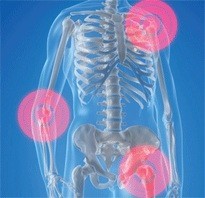Rituximab is an established anti-CD20 monoclonal antibody used for the treatment of some haematological cancers and immune-mediated diseases, such as rheumatoid arthritis (RA). CT-P10 (Truxima) is the first biosimilar of the rituximab reference product and was approved in Europe for all licensed RTX indications in February 2017 [1]. A phase I randomized controlled trial (RCT) of CT-P10 versus reference rituximab in patients with active RA demonstrated that the two drugs had equivalent pharmacokinetics after a single course of treatment and that their efficacy, pharmacodynamics, immunogenicity and safety were comparable up to Week 24 [2]. To allow comparison of CT-P10 versus reference rituximab, patients in the same phase I trial received a second course of treatment and were evaluated for efficacy, safety, pharmacokinetics, pharmacodynamics, and other clinical data for up to 72 weeks. These data demonstrate that the clinical profile of CT-P10 is comparable to reference rituximab in patients with RA over an extended treatment duration [3].
Overall, 154 patients were randomized to receive 1,000 mg CT-P10 (n = 103) or reference rituximab (n = 51) at Weeks 0 and 2. In total, 137 (n = 92 and 45, respectively) patients completed this first course of treatment, of whom 83 (n = 60 and 23) started a second course between Weeks 24 and 48 [3].
Efficacy assessments included Disease Activity Score (DAS) for 28 joints; including erythrocyte sedimentation rate (DAS28-ESR) and DAS28-C-Reactive Protein (DAS28-CRP), Clinical Disease Activity Index (CDAI), Simplified Disease Activity Index (SDAI) and the proportion of patients with a good or moderate response according to European League Against Rheumatism (EULAR) response criteria based on DAS28-CRP and were captured at 8-week intervals. Improvements in DAS28-ESR, DAS28-CRP, CDAI, and SDAI were comparable between patients treated with CT-P10 or reference rituximab over both treatment courses. The proportion of patients with a good EULAR-CRP response at Week 24 after the second course was also comparable between the two treatment groups. According to the study, no significant differences in pharmacokinetics, pharmacodynamics, immunogenicity or safety were observed between CT-P10 and reference rituximab [3].
Studies have demonstrated the long-term therapeutic benefit of rituximab retreatment and it is advocated in current guidelines for the treatment of RA [4–7]. CT‑P10 was the first rituximab biosimilar to demonstrate biosimilarity to reference rituximab in the clinical setting. Now, data for up to two courses of treatment, up to 72 weeks, suggest that the biosimilarity of CT-P10 and reference rituximab continues into the retreatment setting. Moreover, an open-label extension of the clinical trial has recently demonstrated comparable efficacy and safety profiles in patients who switched from reference rituximab to CT-P10 and those maintained on CT-P10 throughout treatment, and showed that long-term treatment with CT-P10 was efficacious and well tolerated [8]. As biosimilars are typically less expensive than originator biologicals [9], studies that examine their long-term use will be vital in guiding clinical decisions that reduce healthcare costs and increase patient access to biological therapies.
Related articles
Comparable efficacy and safety observed in patients switched to biosimilar CT-P10
Rituximab biosimilar CT-P10 could save Europe €90 million in its first year
FDA accepts application for Celltrion/Teva’s rituximab biosimilar
EC approval for first cancer biosimilar Truxima
Conflict of interest
Several of the authors of the research paper [3] reported conflicts of interest, including having received consulting fees and grants from, or being an employee of, Celltrion. For full details of the authors’ conflict of interest, see the research paper [3].
Abstracted by Professor Won Park, School of Medicine, IN-HA University, Incheon, Republic of Korea (medical writing support provided by Louise Niven, DPhil, and funded by Celltrion Healthcare).
References
1. GaBI Online - Generics and Biosimilars Initiative. Biosimilars approved in Europe [www.gabionline.net]. Mol, Belgium: Pro Pharma Communications International; [cited 2017 Sep 15]. Available from: www.gabionline.net/Biosimilars/General/Biosimilars-approved-in-Europe
2. Yoo DH, Suh CH, Shim SC, et al. A multicentre randomised controlled trial to compare the pharmacokinetics, efficacy and safety of CT-P10 and innovator rituximab in patients with rheumatoid arthritis. Ann Rheum Dis. 2017;76(3):566-70.
3. Yoo DH, Suh CH, Shim SC, et al. Efficacy, safety and pharmacokinetics of up to two courses of the rituximab biosimilar CT-P10 versus innovator rituximab in patients with rheumatoid arthritis: results up to week 72 of a phase I randomized controlled trial. BioDrugs. 2017 Jun 13. doi: 10.1007/s40259-017-0232-7. [Epub ahead of print]
4. Keystone EC, Cohen SB, Emery P, et al. Multiple courses of rituximab produce sustained clinical and radiographic efficacy and safety in patients with rheumatoid arthritis and an inadequate response to 1 or more tumor necrosis factor inhibitors: 5-year data from the REFLEX study. J Rheumatol. 2012;39(12):2238-46.
5. Mease PJ, Cohen S, Gaylis NB, et al. Efficacy and safety of retreatment in patients with rheumatoid arthritis with previous inadequate response to tumor necrosis factor inhibitors: results from the SUNRISE trial. J Rheumatol. 2010;37(5):917-27.
6. Buch MH, Smolen JS, Betteridge N, et al. Updated consensus statement on the use of rituximab in patients with rheumatoid arthritis. Ann Rheum Dis. 2011;70(6):909-20.
7. Bukhari M, Abernethy R, Deighton C, et al. BSR and BHPR guidelines on the use of rituximab in rheumatoid arthritis. Rheumatology (Oxford). 2011;50(12):2311-3.
8. Park W, Suh CH, Shim SC, et al. Efficacy and safety of switching from innovator rituximab to biosimilar CT-P10 compared with continued treatment with CT-P10: results of a 56-week open-label study in patients with rheumatoid arthritis. BioDrugs. 2017 Jun 9. doi:10.1007/s40259-017-0233-6. [Epub ahead of print]
9. IMS Health. Shaping the biosimilars opportunity: a global perspective on the evolving biosimilars landscape. December 2011 [homepage on the Internet]. [cited 2017 Sep 15]. Available from: http://weinberggroup.com/pdfs/Shaping_the_biosimiliars_opportunity_A_global_perspective_on_the_evolving_biosimiliars_landscape.pdf Accessed 21 July 2017.
Permission granted to reproduce for personal and non-commercial use only. All other reproduction, copy or reprinting of all or part of any ‘Content’ found on this website is strictly prohibited without the prior consent of the publisher. Contact the publisher to obtain permission before redistributing.
Copyright – Unless otherwise stated all contents of this website are © 2017 Pro Pharma Communications International. All Rights Reserved.








 0
0











Post your comment